In a new case, a photographer claims that celebrity tattoo artist Kat Von D infringed his copyright in an iconic photo of Miles Davis by tattooing the same image onto a client’s body.
Dozens of photography-related copyright cases are filed every week, so I typically only write about ones that I find particularly interesting or unusual. A new complaint against controversial celebrity tattoo artist Katherine Von Drachenberg (aka Kat Von D) checks the boxes on both counts. While perhaps not as provocative as the time she was sued by her insurance company for starting a house fire that killed her cat, as far as copyright lawsuits go, it’s still pretty good.
UPDATE—June 2, 2022: The Kat Von D tattoo lawsuit appears headed to a jury: In a 30-page order, the district court largely denied both parties’ motions for summary judgment, finding triable issues on substantial similarity and fair use. Check out my full breakdown here.
Sedlik v. Von Drachenberg
The lawsuit was filed by California photographer Jeff Sedlik, who owns the copyright in a photo of legendary jazz musician Miles Davis. Here’s Sedlik’s photo, which was first published as part of a cover story for JAZZIZ magazine in 1989:

Sedlik’s portrait has since become an iconic representation of Davis. It was featured by Life magazine in its annual “Pictures of the Year” issue, and has also been affixed to posters, t-shirts and art prints, all licensed by Sedlik.
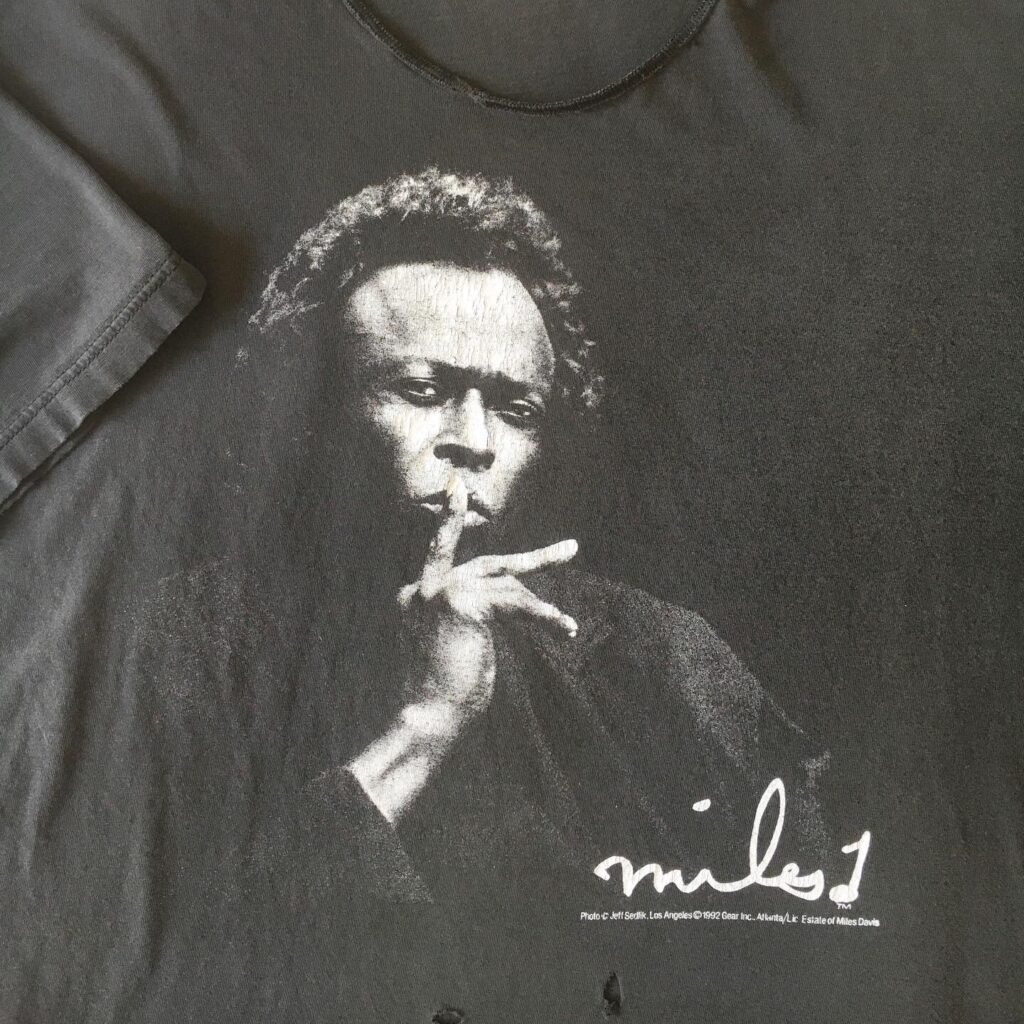
But, notably, the photographer didn’t license the image for use on tattoos.
The principal defendant in Sedlik’s new lawsuit is Katherine Von Drachenberg, better known as Kat Von D. She’s a world-renowned tattoo artist, reality TV star and entrepreneur. Von D quit school at 16 to become a tattoo artist and later appeared for several seasons as the star of TLC’s “L.A. Ink.”
Sedlik alleges in his complaint that Von D infringed the copyright in his Miles Davis photo by tattooing a reproduction of the image onto the skin of one of her clients, and then displaying images of the tattoo online in order to promote her business, High Voltage Tattoo.

Von D chronicled the creation of the tattoo in several photos posted to her social media accounts.

Here’s the finished product as tattooed onto the client’s shoulder:
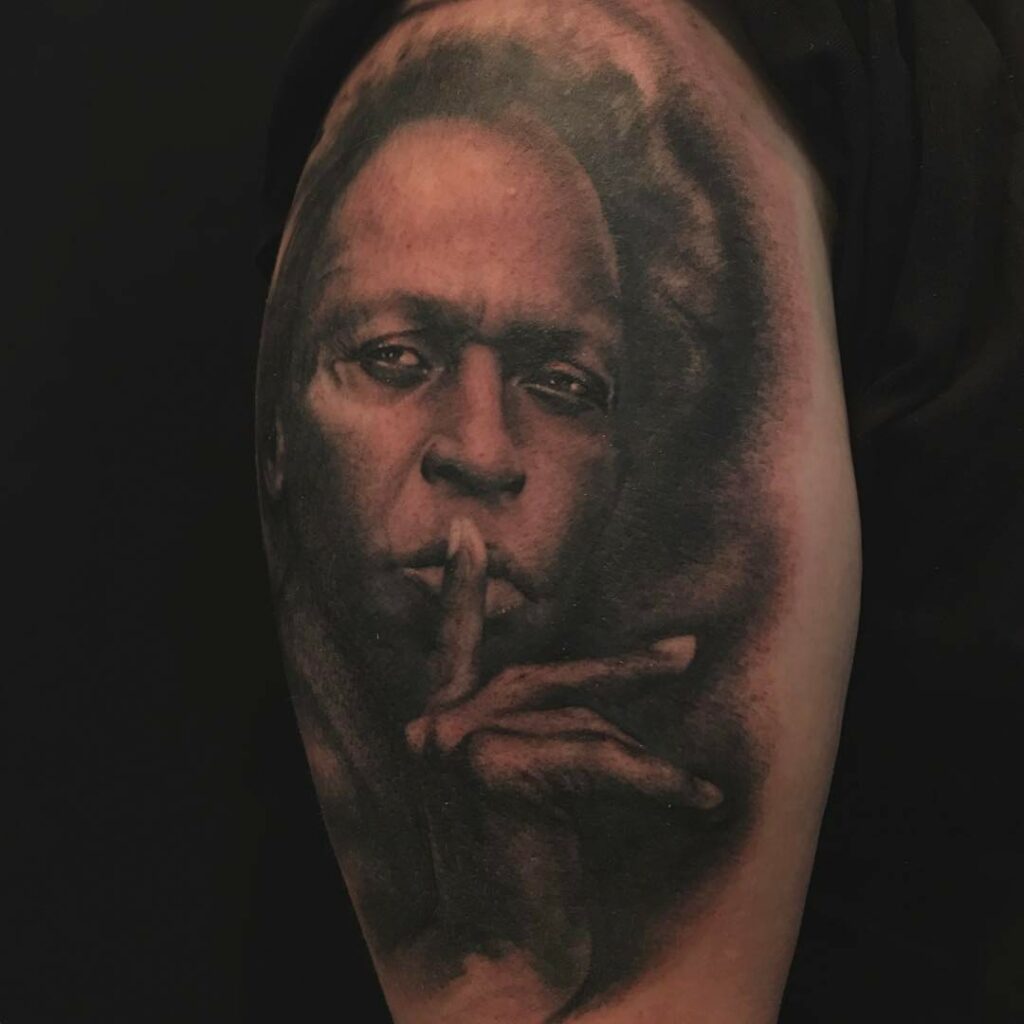
Sedlik isn’t just suing over the social media images, but for the creation of the tattoo in the first place. His complaint alleges that Von D created an unauthorized derivative work based on his photo of Miles Davis, “ultimately fixed in the form of a tattoo on the arm of an individual.”
Tattoo Fair Use?
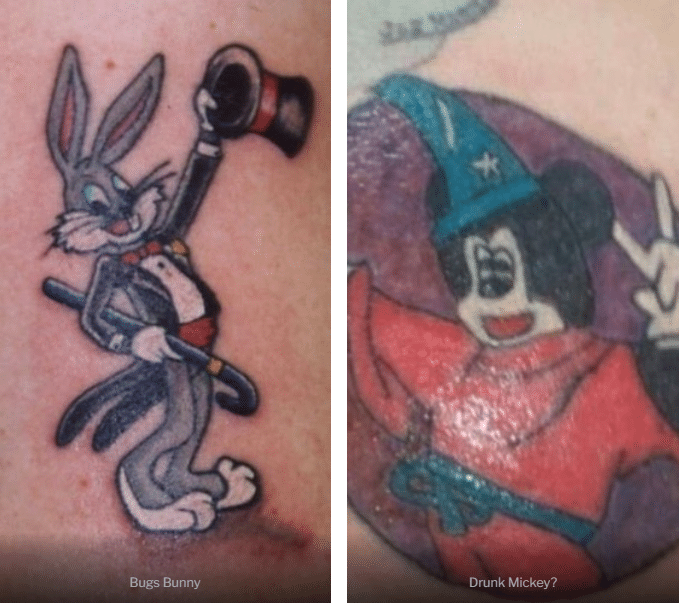
At the risk of stating the obvious, there are a lot of people walking around today with images of various cartoon characters, celebrity images and logos permanently affixed to their bodies. Some of these “bootleg” tattoos turned out pretty well, while others are just god-awful. But very few of them were officially licensed. And none of them, to my knowledge, has been the subject of a copyright infringement lawsuit.
As a practical matter, most celebrities and animation companies aren’t going to risk alienating their biggest fans by hauling them into court. But even if they did, the legal issues may not be as clear cut as they first seem.

Tattoos have been the subject of a handful of copyright cases. I’ve previously written about the lawsuit brought by wrestler Randy Orton’s tattoo artist against video game publisher Take-Two Interactive. That case is scheduled to go to trial later this year. Another notable example involved a tattoo artist’s unsuccessful attempt to enjoin Warner Bros. from releasing “The Hangover: Part II,” in which Ed Helms’ character in the film woke up with a replica of Mike Tyson’s famous face tattoo after a night of heavy drinking.
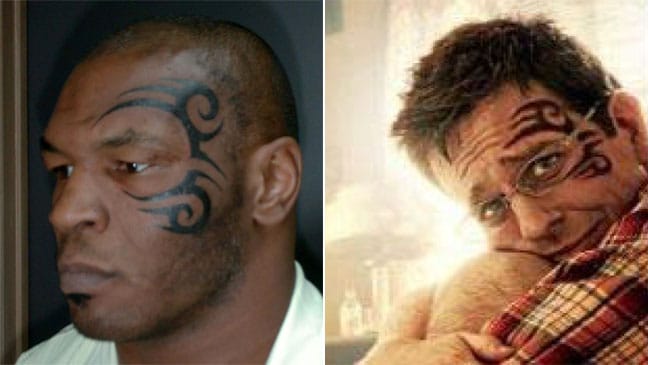
But in these cases, the plaintiff tattoo artists claimed that their copyrighted works were infringed by virtue of being reproduced in video games and movies. In Sedlik’s case, it’s the tattoo artist who’s accused of infringing the defendant’s copyrighted image by creating the tattoo in the first place and then displaying the work on social media.
The most likely copyright defense for Von D to assert is fair use, on the theory that her tattoo transformed the original image in some way by altering it with a new meaning or message.
Not surprisingly, Sedlik’s complaint refers to the offending tattoo as an “unauthorized reproduction.” But there’s a reason people skilled in applying ink are called “tattoo artists” as opposed to “tattoo technicians.” While Von D no doubt used Sedlik’s photo as a reference, the process is not as simple as running someone’s body through a photocopy machine. A court may ultimately find that the act of interpreting and translating a photographic image to the medium of skin doesn’t qualify as a fair use, but this is by no means a settled question. Because Sedlik’s copyright doesn’t extend to the underlying likeness of Miles Davis himself (as opposed to the artistic expression embodied in this particular photo), there’s at least a colorable argument that any copyrightable expression incorporated into the photo been transformed.

If the tattoo itself qualifies as a fair use, it wouldn’t be too much of a stretch to find that photographs of the tattoo on the subject’s body also constitute a fair use. It’s not just that the photos serve to illustrate Von D’s work. They also accurately capture the tattoo subject’s likeness. Indeed, once a tattoo has been affixed to the subject’s body, any photograph of his right shoulder is necessarily going to indirectly reproduce the photographer’s image. A fair use finding may be the only way to ensure that all of these photos aren’t considered to be infringing copies.
Removal of Content Management Information
In addition to copyright infringement, Sedlik also asserts a claim for violation of 17 U.S.C. § 1202, which prohibits the knowing removal or alteration of “content management information” (CMI) with the intent to conceal infringement. CMI generally extends to such information as the photographer’s name and any copyright notices appearing on the photo. Generally, section 1202 claims arise in the context of removing credit information from photos which are then published on websites or social media.
I’ve never seen a 1202 claim brought in the context of a tattoo before. If it’s valid, this would mean that tattoo artists would need to include credit and copyright information on their clients’ skin, or else face additional liability. And while this may be a stretch, it could also potentially raise a 13th Amendment issue to the extent that it suggests that the copyright owner has the right to ensure that a tattoo subject is forcibly branded in order for the artist or subject to avoid liability.
Unsettled (and Uncomfortable) Questions
While perhaps not directly raised by Sedlik’s lawsuit, a whole host of unsettled issues are implicated by the prospect of finding that a tattoo subject’s body constitutes the medium on which an infringing derivative work has been placed. Could the photographer seek an injunction asking a court to order the tattoo subject to cover up in public—or even force him to surgically remove the infringing image? One would expect that the individual’s right to privacy and bodily autonomy would outweigh whatever interest the copyright owner may have in the right to control the public display of his work, but can we be sure? And let’s not forget that this guy is now sporting a celebrity’s likeness on his shoulder. If he were to appear in an advertisement or some other commercial setting, could the estate of Miles Davis assert a right of publicity claim seeking a cut (or even stop him altogether)?
Based on his complaint, it looks like Sedlik is not only seeking monetary damages against Kat Von D and her company, but is also asking for an order forcing her to remove her social media posts and any other print or online content that incorporates Sedlik’s photo. In other words, if the plaintiff prevails, Von D would be effectively prevented from posting any full body photographs of her client. While the lawsuit (smartly) does not name Kat Von D’s client himself as a defendant, it’s important for a judge deciding the case to consider the effect that a broad ruling could have on tattooed subjects.
Sedlick’s legal theory, if accepted, would conceivably extend to any other images of the tattooed subject which may appear online or in print. If Sedlik were entitled to damages every time someone posted a photo of Von D’s client (or the client posted a photo of himself), that would seem to give the photographer an inordinate amount of control over this individual’s life and livelihood. It’s something for the judge and jury to think about, unless of course the case settles first.
UPDATE—July 2, 2022. In a 30-page order, the district court largely denies both parties’ motions for summary judgment, finding triable issues on substantial similarity and fair use. Check out my full breakdown here.
A copy of the complaint is below. As always, let me know what you think! You can reach out in the comments below or on any of the Copyright Lately social media accounts.
View Fullscreen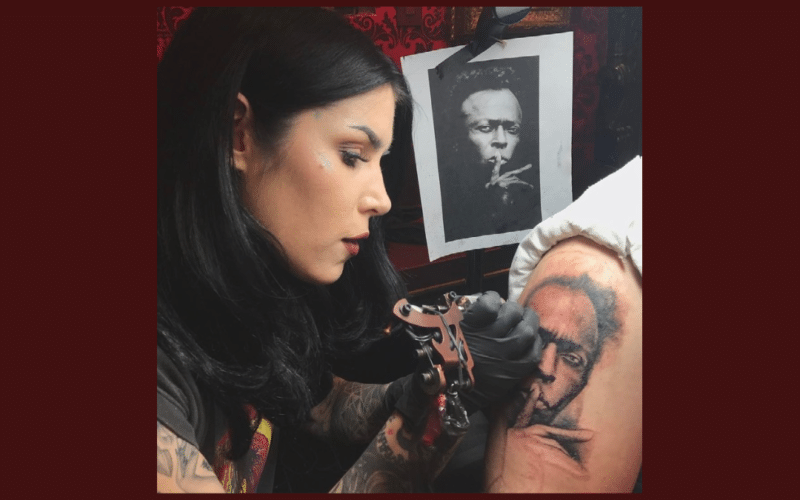

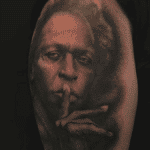




8 comments
In Fort Walton Beach, and likely elsewhere, in the mid to late 80’s, there were multiple air brush artists that created images on t-shirts. They made custom orders, or copied something on the walls displayed in their stores. One day a “tourist” came in and videotaped everything on the walls and the artists, customers, etc. Garfield, for example, and other cartoons were popular subjects. The artists and I assume the store owners were successfully sued and had to pay the copyright holders.
I think the photographer has a pretty good case. Often times clients will bring inspiration in for a tattoo and the artist will draw something new out of it. The client in this case wanted this specific interpretation of Miles Davis. KVD could have gotten multiple pictures of MD and created a new piece with a differently posed hand, different lighting on the skin etc. The other issue is the transfer stencil. KVD would have traced the photo 1:1 to make a stencil to put on the skin and keep it the same size as the photo reference. The act of tracing the original image shows you are trying to copy it as accurately as possible.
It is obvious tht VonD traced the image..It is a mirror image & extremely accurate to original…This makes a valid argument.. There is nothing right about taking someone else’s work and putting your name on it while profiting from it…It is a known secret of sorts tht artist will trace images & upsize or downsize for application..Is it right no, but they do it often enough …
Go ahead and convince me that this isn’t about money that’s okay I’ll wait! Someone wants their 5 Seconds Of Fame. The funny thing is is that her tattoo is still better than his image🤣
It’s fair use and anything less than that is ridiculous.
This guy is stupid ,
There is in no possible way it is an exact spot on replica of the picture in question.
She is good but dam people she is not God.
Ok
So with that said ,there has to be something that is not 💯 percent the same between the two .No possible way they could be perfectly the same .
This guy is just obviously pulling for a cash prize for some ridiculous picture he made 50 years ago .
Like anyone really gives a dam about the picture the person or the guy that took the pic .
Grow up dude.
And I would counter sue for defamation of character of person and also the business.
And I would sue big ..
Just another man wanting something for nothing,he must be so bored with his life,most people don’t even know who Miles Davis is,
Drop it and move on…
The photographer is a POS. He saw an opportunity to make some money. If this was some Joe Blow tattoo artist, the lawsuit never would have happened.
Think of how many people have tattoos of poetry verses, cartoon characters, celebrities, artwork. Imagine the precedence it would set if he actually won.